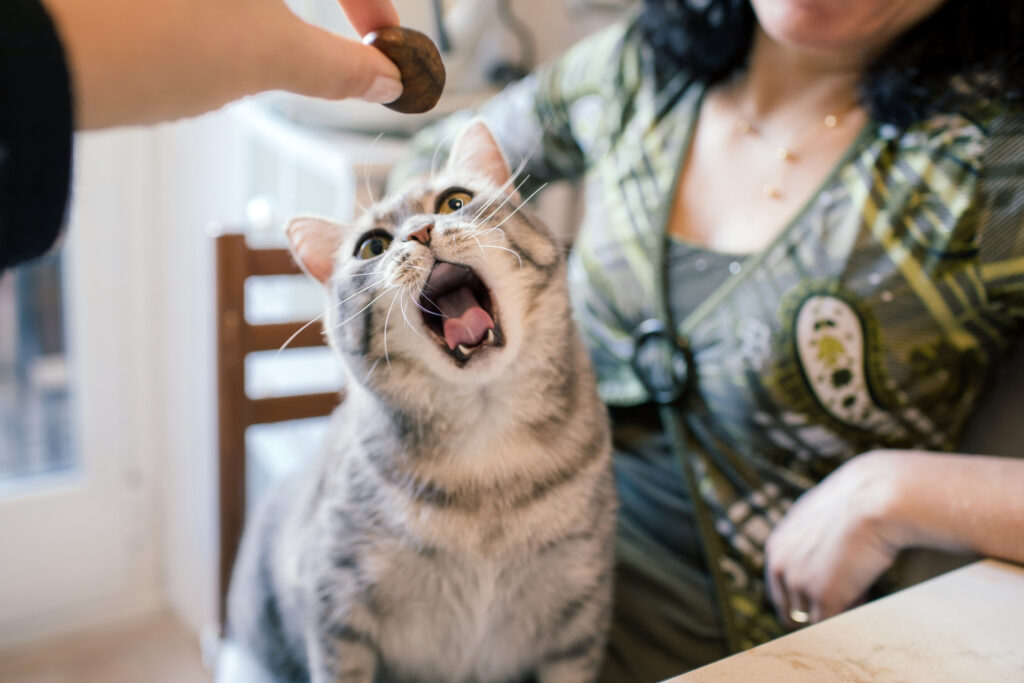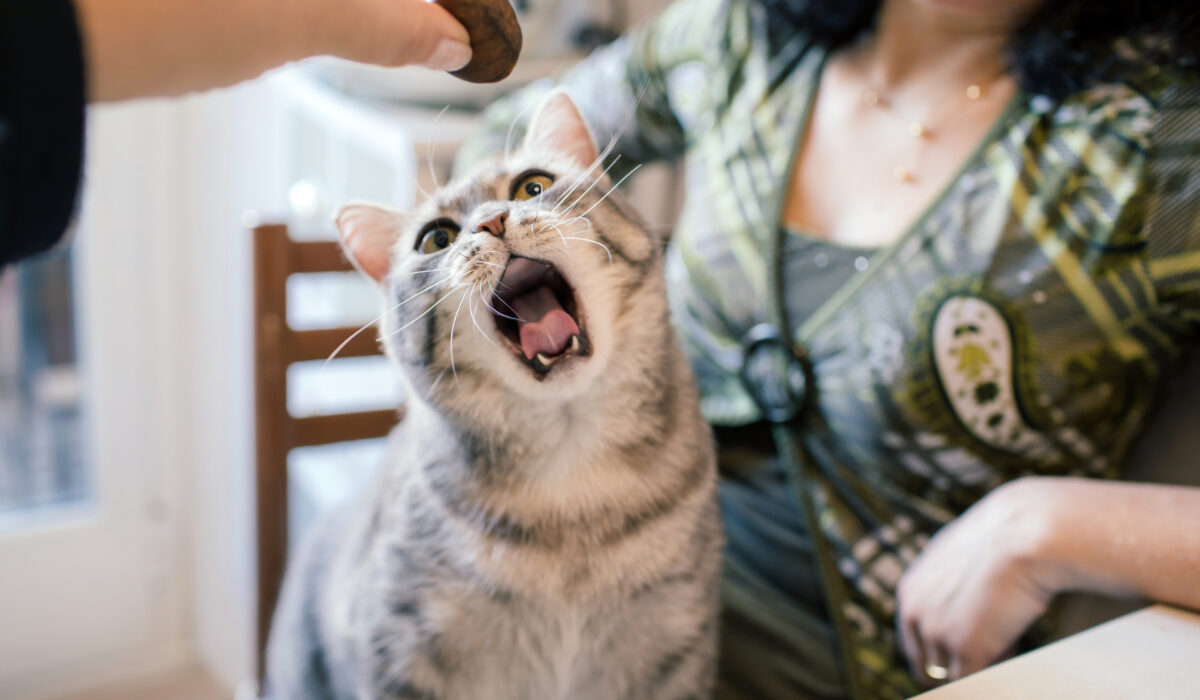Homemade Cat Food Recipes: Nutritious Meals for Your Feline Friend!
As cat owners, we want to provide the best nutrition possible for our beloved feline companions. With growing concerns about commercial pet food quality and recalls, many US cat owners are turning to homemade alternatives. Preparing your cat’s meals at home gives you complete control over ingredients, ensuring freshness and quality while potentially saving money. However, creating nutritionally balanced homemade cat food requires knowledge and careful planning.

Understanding Your Cat’s Nutritional Needs
Before diving into recipes, it’s crucial to understand that cats are obligate carnivores with specific dietary requirements that differ significantly from dogs or humans. Unlike dogs, cats cannot synthesize certain essential nutrients and must obtain them directly from their diet.
Essential Nutrients for Cats
Cats require high-quality protein as the foundation of their diet, typically comprising 50-60% of their daily calories. They need specific amino acids, including taurine, which is found only in animal tissue. Taurine deficiency can cause serious heart problems and blindness in cats.
Cats also require arachidonic acid, an essential fatty acid found only in animal fat. This nutrient supports healthy skin, coat, and immune function. Additionally, cats need vitamin A in its pre-formed state (retinol), which they cannot synthesize from beta-carotene like other animals.
Calcium and phosphorus must be present in the correct ratio (approximately 1.2:1) for proper bone health. Cats also need adequate levels of B vitamins, particularly B12, thiamine, and niacin, along with minerals like zinc, iron, and magnesium.
Why Homemade Cat Food?
Making your cat’s food at home offers several advantages. You have complete control over ingredient quality, ensuring your cat receives fresh, high-grade proteins and avoiding potential allergens or additives that might cause digestive issues. Many cats with food sensitivities or allergies benefit from homemade diets where every ingredient is known and controlled.
Homemade food can also be more cost-effective, especially for households with multiple cats or those feeding premium commercial diets. Additionally, some cats simply prefer the taste and texture of fresh, home-prepared meals.
Basic Homemade Cat Food Recipes
These recipes provide a foundation for preparing nutritious meals for your cat. Remember that transitioning to homemade food should be done gradually over 7-10 days to avoid digestive upset.
Simple Chicken and Rice Recipe
This basic recipe serves as an excellent starting point for homemade cat food preparation.
Ingredients:
- 1 pound boneless, skinless chicken thighs
- 1/4 cup cooked brown rice
- 1 tablespoon chicken liver (essential for vitamin A)
- 1 tablespoon fish oil or salmon oil
- 1/4 teaspoon salt substitute (potassium chloride)
- Cat vitamin supplement (as directed by manufacturer)
Instructions: Begin by cooking the chicken thighs thoroughly, either by boiling, baking, or steaming. Avoid using oils, seasonings, or spices during cooking. Once cooked, remove any remaining bones and shred the meat into small, manageable pieces.
Cook the brown rice separately according to package directions, using water instead of broth. Allow both the chicken and rice to cool completely before mixing.
In a large bowl, combine the shredded chicken, cooked rice, and chopped chicken liver. Add the fish oil and salt substitute, mixing thoroughly. Finally, add the vitamin supplement according to the manufacturer’s instructions.
This recipe yields approximately 4-5 servings for an average-sized cat. Store portions in the refrigerator for up to three days or freeze individual servings for longer storage.
Salmon and Sweet Potato Delight
This recipe provides omega-3 fatty acids and beta-carotene while offering variety in your cat’s diet.
Ingredients:
- 12 ounces fresh salmon fillet, skin removed
- 1/4 cup cooked sweet potato, mashed
- 1 tablespoon beef liver, finely chopped
- 1 egg yolk
- 1 tablespoon olive oil
- Pinch of dried parsley
- Cat vitamin supplement
Instructions: Start by cooking the salmon thoroughly, either by baking at 350°F for 15-20 minutes or steaming until it flakes easily. Remove any bones carefully and flake the salmon into small pieces.
Cook the sweet potato by boiling or baking until tender, then mash it smooth. Cook the beef liver lightly in a dry pan until just cooked through, then chop it finely.
In a mixing bowl, combine the flaked salmon, mashed sweet potato, and chopped liver. Add the egg yolk and olive oil, mixing gently to combine. Sprinkle with dried parsley and add the vitamin supplement.
This recipe creates 3-4 servings and can be stored in the refrigerator for up to two days or frozen in individual portions.
Turkey and Vegetable Medley
This recipe incorporates beneficial vegetables while maintaining the high protein content cats require.
Ingredients:
- 1 pound ground turkey (85% lean)
- 2 tablespoons cooked carrots, finely chopped
- 2 tablespoons cooked peas, mashed
- 1 tablespoon chicken liver, cooked and chopped
- 1 tablespoon bone meal powder (available at pet stores)
- 1 tablespoon coconut oil, melted
- Cat vitamin supplement
Instructions: Cook the ground turkey thoroughly in a large pan, breaking it into small pieces as it cooks. Avoid adding oils or seasonings during cooking. Drain any excess fat and allow the turkey to cool.
Steam the carrots and peas until tender, then chop the carrots finely and mash the peas. Cook the chicken liver until just done, then chop it into small pieces.
Combine all ingredients in a large bowl, mixing thoroughly to ensure even distribution. Add the vitamin supplement according to package directions.
This recipe yields 5-6 servings and stores well in the refrigerator for up to three days.
Special Dietary Considerations
Some cats have specific dietary needs that require recipe modifications. Understanding these requirements helps ensure your homemade food meets your cat’s individual needs.
Senior Cat Modifications
Older cats often benefit from softer textures and enhanced palatability. Consider grinding or mincing proteins more finely and adding warm water or low-sodium broth to create a more appealing consistency. Senior cats may also benefit from additional omega-3 fatty acids for joint health.
Cats with Kidney Disease
Cats with kidney issues require reduced phosphorus and modified protein levels. Consult with your veterinarian before preparing homemade food for cats with kidney disease, as these diets require careful monitoring and precise nutrient balance.
Overweight Cats
For cats needing weight management, increase the proportion of lean proteins and reduce carbohydrates. Adding steamed vegetables like green beans or zucchini can help increase volume while reducing calories. Always consult your veterinarian before starting a weight loss program.
Food Safety and Storage Guidelines
Proper food safety practices are essential when preparing homemade cat food. Always wash your hands thoroughly before and after handling raw ingredients, and clean all surfaces and utensils with hot, soapy water.
Safe Handling Practices
Use separate cutting boards for raw meats and other ingredients to prevent cross-contamination. Cook all proteins to appropriate internal temperatures: poultry to 165°F, ground meats to 160°F, and fish to 145°F. Allow cooked foods to cool completely before mixing with other ingredients.
Store raw ingredients in the refrigerator at 40°F or below, and use them within recommended time frames. Fresh meats should be used within 1-2 days of purchase, while frozen meats can be stored for several months.
Proper Storage Methods
Homemade cat food should be stored in airtight containers in the refrigerator and used within 2-3 days. For longer storage, divide the food into meal-sized portions and freeze in individual containers or ice cube trays.
When thawing frozen portions, move them to the refrigerator 24 hours before serving. Never thaw cat food at room temperature, as this promotes bacterial growth. Once thawed, use the food within 24 hours and never refreeze.
Foods to Avoid
Certain foods that are safe for humans can be toxic or harmful to cats. Never include onions, garlic, chocolate, grapes, raisins, or artificial sweeteners like xylitol in homemade cat food.
Avoid raw fish, as it can contain harmful bacteria and parasites. Raw eggs should also be avoided due to the risk of salmonella and the presence of avidin, which can interfere with biotin absorption.
Dairy products can cause digestive upset in many cats, as most adult cats are lactose intolerant. Bones, especially cooked bones, should never be given to cats as they can splinter and cause serious injuries.
Transitioning to Homemade Food
Switching your cat to homemade food should be done gradually to avoid digestive upset. Start by replacing 25% of your cat’s current food with homemade food for 2-3 days, then increase to 50% for another 2-3 days.
Continue increasing the proportion of homemade food every few days until you’ve completely transitioned to the new diet. Monitor your cat closely during this transition period for any signs of digestive upset or food intolerance.
Some cats may be resistant to dietary changes, especially if they’ve been eating the same commercial food for years. Try warming the homemade food slightly or mixing in a small amount of their favorite treat to increase acceptance.
Consulting with Your Veterinarian
Before switching to a homemade diet, discuss your plans with your veterinarian. They can help ensure the recipes you choose meet your cat’s specific nutritional needs and may recommend additional supplements or modifications.
Regular veterinary checkups become even more important when feeding homemade diets. Your vet can monitor your cat’s health and make dietary adjustments as needed. Annual blood work can help identify any nutritional deficiencies or imbalances early.
If you notice any changes in your cat’s energy level, coat condition, or overall health after switching to homemade food, consult your veterinarian immediately. Some cats may require specialized diets due to medical conditions or genetic predispositions.
Cost Considerations and Meal Planning
Homemade cat food can be economical, especially when buying ingredients in bulk or taking advantage of sales. Calculate the cost per serving to compare with commercial options, remembering to factor in the cost of supplements and storage containers.
Planning meals in advance helps ensure variety and balanced nutrition while making the most of your grocery budget. Consider preparing large batches and freezing portions to save time and money.
Buy proteins when they’re on sale and freeze them in meal-sized portions. This strategy helps reduce costs while ensuring you always have ingredients available for your cat’s meals.
Conclusion
Preparing homemade cat food can be a rewarding way to provide high-quality nutrition for your feline companion. While it requires planning and attention to detail, the benefits of controlling ingredients and ensuring freshness make it worthwhile for many cat owners.
Remember that every cat is unique, and what works for one may not work for another. Start with simple recipes and gradually experiment with different proteins and ingredients to find what your cat enjoys most. Always prioritize safety and nutritional balance, and don’t hesitate to consult with your veterinarian for guidance.
With proper preparation and planning, homemade cat food can be a healthy, cost-effective alternative to commercial options that strengthens the bond between you and your feline friend while providing them with the nutrition they need to thrive.


